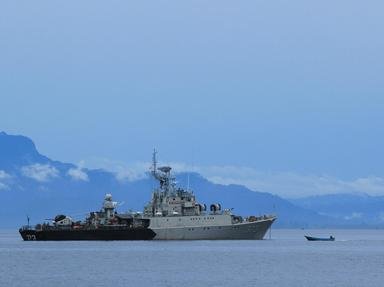Quiz Answer Key and Fun Facts
1. In 2022, the Russian cruiser Moskva was sunk in the Black Sea having been hit by Ukrainian anti-ship missiles. Of what class of cruiser was Moskva the lead ship?
2. In 2010, the South Korean corvette ROKS Cheonan was sunk during a confrontation with North Korea. What caused the ship's sinking?
3. In 1986, a major incident took place between the US Navy and Libyan Armed Forces that saw the Libyan corvette Ain Zaquit sunk. In which body of water did this occur?
4. During the Falklands War in 1982, the Royal Navy lost two of the three Type 42 destroyers, HMS Sheffield and HMS Coventry, that were originally assigned to the Task Force sent to retake the islands. Which Type 42 destroyer, that survived the conflict, was the third?
5. In 1982, the Argentine cruiser ARA General Belgrano became the first warship to be sunk by a nuclear submarine in combat. Which British submarine was responsible for the ship's sinking?
6. In 1980, HMBS Flamingo, a patrol ship of the Royal Bahamas Defence Force, was sunk when it came under attack by aircraft from which country's air force?
7. In December 1971, the Indian Navy frigate INS Khukri was torpedoed and sunk by a Pakistan Navy submarine near the port of Diu on the coast of which Indian state?
8. During the 1967 War of Attrition, the Israeli destroyer INS Eilat was sunk by anti-ship missiles fired by a missile boat from which country's navy?
9. The frigate NRP Afonso de Alberquerque was the lead vessel of Portugal's naval forces stationed in Goa when India launched its invasion of the territory in 1961. Off what port was the ship when it was sunk by the Indian Navy?
10. During the 1956 Suez Crisis, the Egyptian frigate ENS Domiat was sunk following a gun battle with which Royal Navy cruiser?
Source: Author
Red_John
This quiz was reviewed by FunTrivia editor
gtho4 before going online.
Any errors found in FunTrivia content are routinely corrected through our feedback system.
